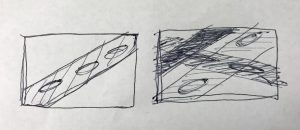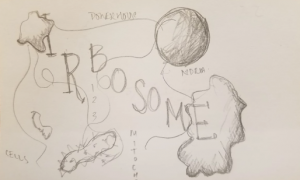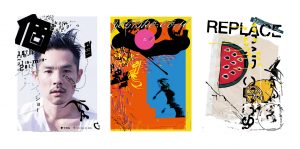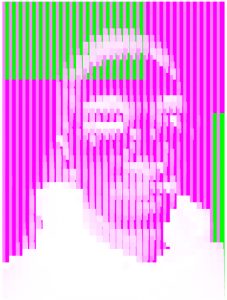project10
//Fon Euchukanonchai
//15-104 Section A
//keuchuka@andrew.cmu.edu
//Project-10
var plates = [];
var plates2 = [];
var plates3 = [];
var sushi = [];
var sushi2 = [];
var sushi3 = [];
var salmon;
var roe;
var egg;
var seaweed;
//preload all images of sushi and gradients
function preload(){
var bgLink = "https://i.imgur.com/alDAyjZ.jpg"
var bar1Link = "https://i.imgur.com/60amesK.png"
var bar2Link = "https://i.imgur.com/fghTsKQ.png"
var bar3Link = "https://i.imgur.com/SCIYqYe.png"
var salmonLink = "https://i.imgur.com/Cb4N5Lb.png"
var roeLink = "https://i.imgur.com/rJjcqJo.png"
var eggLink = "https://i.imgur.com/FMF2QvN.png"
var seaweedLink = "https://i.imgur.com/QbnIWmr.png"
salmon = loadImage(salmonLink)
roe = loadImage(roeLink)
egg = loadImage(eggLink)
seaweed = loadImage(seaweedLink)
bg = loadImage(bgLink)
bar1 = loadImage(bar1Link)
bar2 = loadImage(bar2Link)
bar3 = loadImage(bar3Link)
}
function setup() {
createCanvas(480, 360)
}
//make new plates for first belt
function makenewPlates(){
//even-ish chance of getting different types of sushi
if(random(0,2)<0.0025 & random(0,2)> 0.000){
plates.push(new makePlates(width,60, -6, 3.5));
sushi.push(new makeSushi(width-30, 40, -6, 3.5, salmon))
} else if(random(0,2)<0.005 & random(0,2)> 0.0025) {
plates.push(new makePlates(width,60, -6, 3.5));
sushi.push(new makeSushi(width-30, 40, -6, 3.5, egg))
} else if(random(0,2)<0.0075 & random(0,2)> 0.005) {
plates.push(new makePlates(width,60, -6, 3.5));
sushi.push(new makeSushi(width-30, 40, -6, 3.5, roe))
} else if(random(0,2)<0.01 & random(0,2)> 0.075) {
plates.push(new makePlates(width,60, -6, 3.5));
sushi.push(new makeSushi(width-30, 40, -6, 3.5, seaweed))
}
}
//make new plates for second belt
function makenewPlates2(){
if(random(0,2)<0.0025 & random(0,2)> 0.000){
plates2.push(new makePlates(93,0, 5, 3));
sushi2.push(new makeSushi(63, -25, 5, 3, salmon))
} else if(random(0,2)<0.005 & random(0,2)> 0.0025) {
plates2.push(new makePlates(93,0, 5, 3));
sushi2.push(new makeSushi(63, -25, 5, 3, egg))
} else if(random(0,2)<0.0075 & random(0,2)> 0.005) {
plates2.push(new makePlates(93,0, 5, 3));
sushi2.push(new makeSushi(63, -25, 5, 3, roe))
} else if(random(0,2)<0.01 & random(0,2)> 0.075) {
plates2.push(new makePlates(93,0, 5, 3));
sushi2.push(new makeSushi(63, -25, 5, 3, seaweed))
}
}
//make new plates for third belt
function makenewPlates3(){
if(random(0,2)<0.0025 & random(0,2)> 0.000){
plates3.push(new makePlates(0, 170, 6, -3.5));
sushi3.push(new makeSushi(-30, 150, 6, -3.5, salmon))
} else if(random(0,2)<0.005 & random(0,2)> 0.0025) {
plates3.push(new makePlates(0, 170, 6, -3.5));
sushi3.push(new makeSushi(-30, 150, 6, -3.5, egg))
} else if(random(0,2)<0.0075 & random(0,2)> 0.005) {
plates3.push(new makePlates(0, 170, 6, -3.5));
sushi3.push(new makeSushi(-30, 150, 6, -3.5, roe))
} else if(random(0,2)<0.01 & random(0,2)> 0.075) {
plates3.push(new makePlates(0, 170, 6, -3.5));
sushi3.push(new makeSushi(-30, 150, 6, -3.5, seaweed))
}
}
function draw(){
// sushi travels slowly
frameRate(25)
//background image
image(bg, 0,0)
//call to push plates into array
makenewPlates();
makenewPlates2();
makenewPlates3();
//conveyor belt 1
image(bar1, 0,0)
//move and display sushi and plates in first set of array
for (var i = 0; i < plates.length; i++){
plates[i].move();
plates[i].display();
sushi[i].move();
sushi[i].display();
}
//conveyor belt 2
image(bar2, 0,0)
//move and display sushi and plates in second set of array
for (var i = 0; i < plates2.length; i++){
plates2[i].move();
plates2[i].display();
sushi2[i].move();
sushi2[i].display();
}
//conveyor belt 3
image(bar3, 0,0)
//move and display sushi and plates in third set of array
for (var i = 0; i < plates3.length; i++){
plates3[i].move();
plates3[i].display();
sushi3[i].move();
sushi3[i].display();
}
}
// constructing the plates and their behavior
function makePlates(makeX, makeY, speedX, speedY){
this.x = makeX
this.y = makeY
this.Xspeed = speedX
this.Yspeed = speedY
this.color = color(255,0,0)
this.move = function() {
this.x += this.Xspeed
this.y += this.Yspeed
}
this.display = function(){
noStroke();
fill(170, 170, 170);
ellipse(this.x-5, this.y+12, 102, 57)
fill(199, 222, 202)
ellipse(this.x, this.y+2, 113,66)
fill(240, 249, 250)
ellipse(this.x, this.y, 113, 66)
fill(203,233,230)
ellipse(this.x, this.y, 95, 56)
fill(240, 249, 250)
ellipse(this.x, this.y+3, 89, 51)
}
}
// constructing the different sushis and their behavior
function makeSushi(makeX, makeY, speedX, speedY, top){
this.x = makeX
this.y = makeY
this.fish = top
this.Xspeed = speedX
this.Yspeed = speedY
this.color = color(255,0,0)
this.move = function() {
this.x += this.Xspeed
this.y += this.Yspeed
}
this.display = function(){
image(this.fish,this.x, this.y)
}
}

initial sketches
I didn’t really want a traditional landscape, so I thought about representing either faces or food. The phrase “stuff passing by” really reminded me of a sushi conveyor belt, so I decided to use that as my landscape. Having one felt like the conveyor belt was more an object, therefore I made three in order to make the piece a bit more spatial and landscape-y. I started by drawing the bars and sushi itself with code, but it wasn’t too efficient and I couldn’t get to the level of detail I wanted. I ended up drawing it somewhere else and animating it with p5. The result is some abstract land with some sushi flying around on colorful carousels.
![[OLD FALL 2017] 15-104 • Introduction to Computing for Creative Practice](../../wp-content/uploads/2020/08/stop-banner.png)









